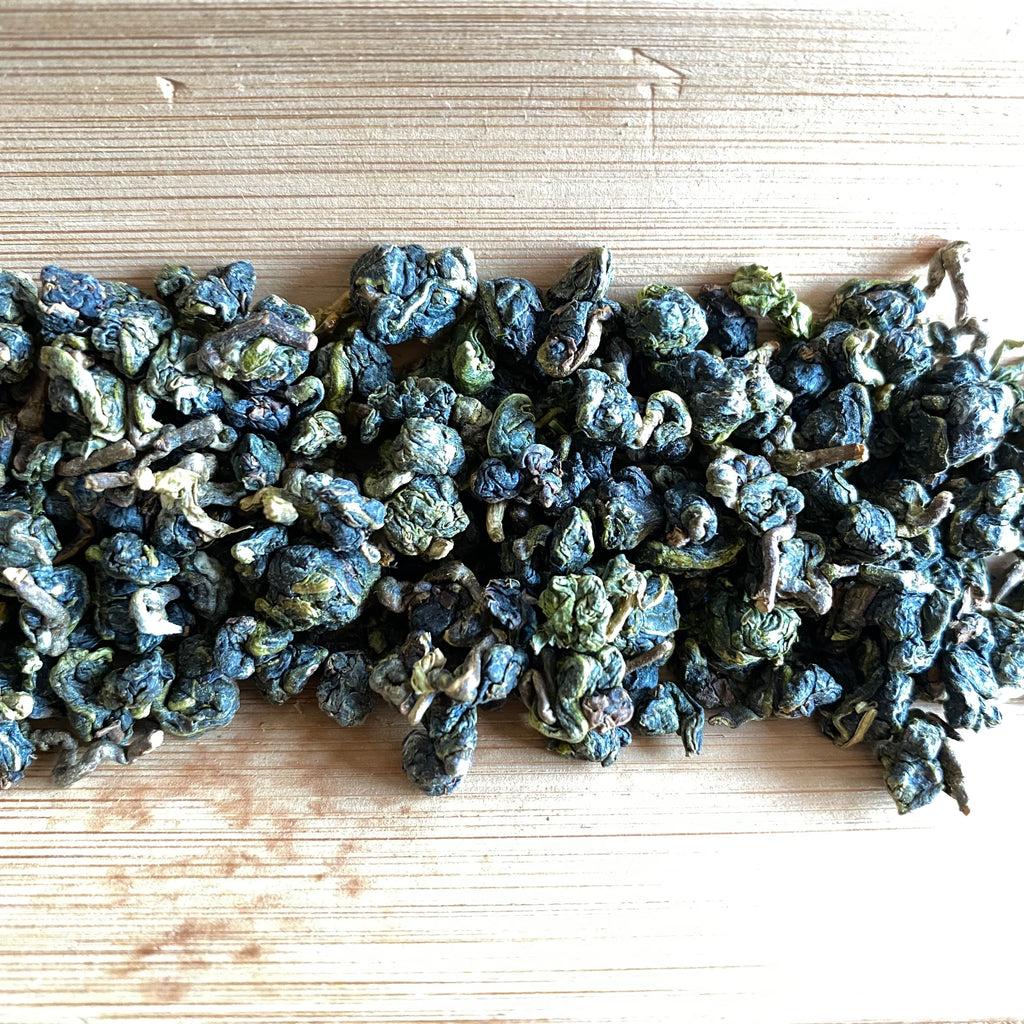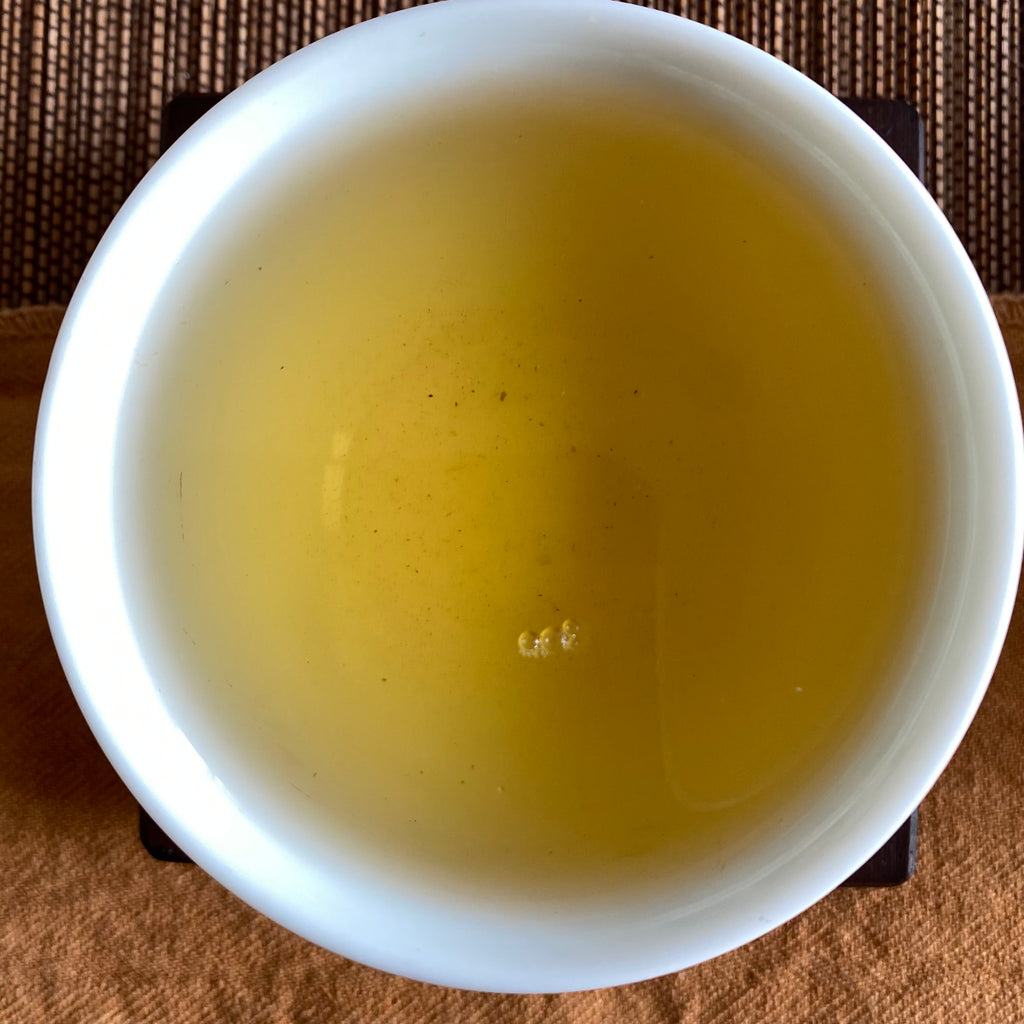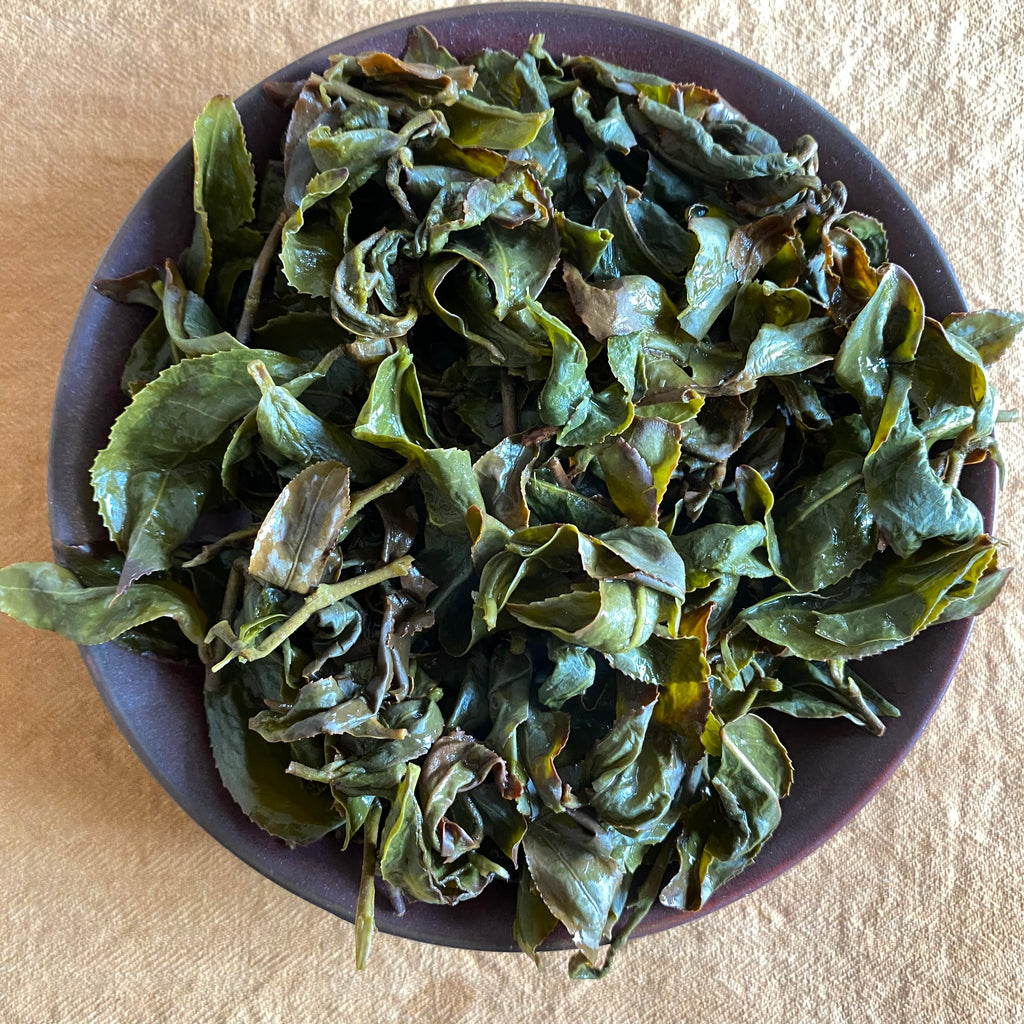
Traditional Lugu Oolong Tea Tasting Notes | Eco-Cha Tea Club

Batch 99 of the Eco-Cha Tea Club is a Traditional Lugu Oolong Tea made from a winter 2023 harvest of Qing Xin Oolong leaf material grown at 700m elevation in Yonglong Village of Lugu Township, Taiwan. The slightly mature winter flush was processed more traditionally in that it underwent ample solar withering in the initial stage and extensive tumbling at the end of the withering process in order to induce a more thorough degree of oxidation. The leaves also underwent sufficient primary rolling after being tumble heated to cease the oxidation process. Primary rolling induces a sort of post oxidation by redistributing the moisture throughout the leaves and further breaking down the cellular structure and fiber material before the leaves are rolled and dried the following day.

We can see the degree of maturity in the leaves by the bulky and chunky shape of the rolled leaf material and the thickness of the stems. The coloration is basically uniform however, without noticeable yellowing in the leaves. This indicates that the leaves were not overly mature when picked, and that they were still developing — even if slowly toward the end of the final flush of the year. In our experience, which we have had confirmed by local artisans, the slightly thicker, slow growing, more fibrous leaf material that is produced in winter has a distinctive character.
This is where the traditional oolong tea making skills come into play. Prior to modern tea production that aims toward maximum yield and uniform quality, the harvests were, well let's say — more relaxed. The new growth was typically allowed to mature more — allowing the vegetation process nourish the tree. And then this new season of leaf growth was plucked just before it was done serving its purpose. It evidently has to do with the chemistry of the sap in the leaves at this growth stage that makes the tea more interesting in the brewed tea results. What we know for sure is that it has a distinctive character — which starts with the raw material and is handled with traditional understanding of how to work with this material to achieve the desired results.

So, this is a well oxidized Oolong Tea, and it's not at all red or even hinting at orange. This is significant. The fact that this mature winter leaf was processed thoroughly without becoming "red" is testimony to skillful oolong tea making. It apparently is about coaxing the leaves to transform in their chemical constitution without overly bruising them —which leads to something on its way toward Black Tea production methods. And the color reflects the flavor profile that results from this skillful processing that is most often simply called "traditional".
The flavor has a substantial, vibrant profile that has a sort of balanced full spectrum character. It's aromatic, sweet, bitter, and astringent all-in-one. The unroasted aspect offers something fresh, with a bit of bite in its underlying bitter/astringency. But it also offers freshly cracked walnuts, nutmeg, flowery and fruity notes. And perhaps the most interesting aspect is how its all rather subdued, but distinct at the same time! This is the fundamental character of a traditional unroasted Lugu Oolong Tea. It's not flashy, but its got something compelling that grows on you. It certainly holds its own on the Oolong spectrum.

The oxidation level is most evident in the coloration of the brewed leaves, where we can see the reddening of the leaf tips and edges, and moreso in the smaller leaves. But the structure of the leaves remains mostly in tact, allowing for the depletion of moisture through the stems, rather than through the fractured leaves.
All of this explanation of the leaves and their processing is really just an attempt to convey what is meant by a "Traditional Lugu Oolong Tea". Watch the video for the live tasting and storytelling of this batch of tea!

